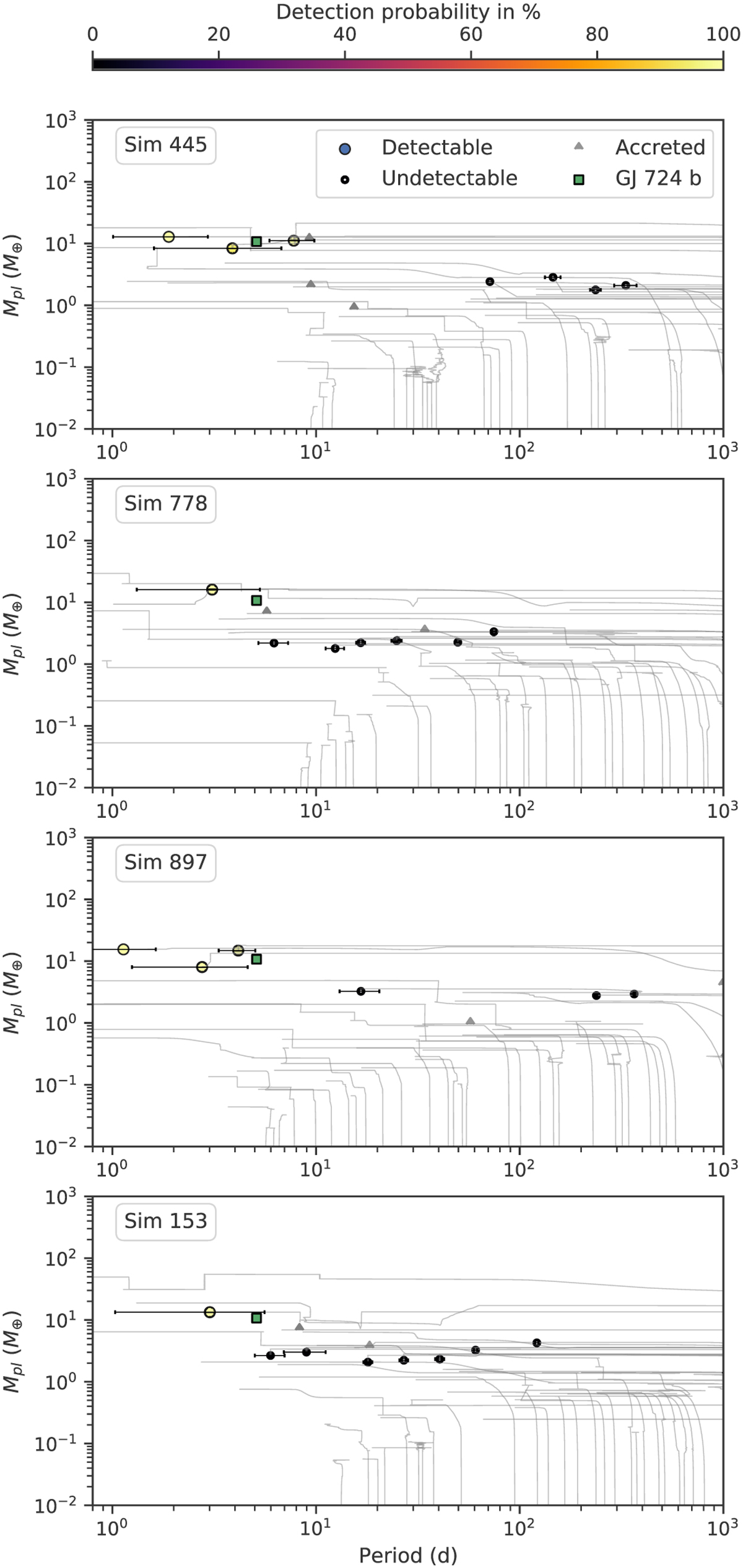Fig. 14

Download original image
Planetary mass against orbital period of theoretically computed planetary systems. The four systems are selected from the 1000 synthetic systems of Burn et al. (2021) by filtering for observable planets with e > 0.4 and maximum displacement of 0.5 times the orbital period and mass of GJ 724 b. Planets with detection probabilities above 50% are plotted with bigger markers and thinner edges. Thin gray lines show the past history of each planet and triangles show planets accreted by the planet closest to GJ 724 b in mass-period space; for simulation 445, this is the second planet. Horizontal black error-bars indicate the distance from apastron to periastron of the planets measured in periods of circular orbits. Two pathways leading to different numbers of observable planets can be distinguished with only the pathway with recent accretion of a massive counterpart and a unobservable exterior chain of planets leading to a single detectable planet.
Current usage metrics show cumulative count of Article Views (full-text article views including HTML views, PDF and ePub downloads, according to the available data) and Abstracts Views on Vision4Press platform.
Data correspond to usage on the plateform after 2015. The current usage metrics is available 48-96 hours after online publication and is updated daily on week days.
Initial download of the metrics may take a while.


